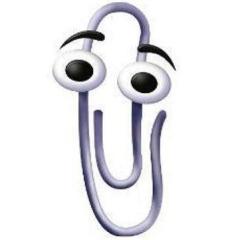-
Posts
128 -
Joined
-
Last visited
About jimmy eng
- Birthday June 24
Contact Methods
-
Website URL
http://www.facebook.com/sadasata
Profile Information
-
Gender
Male
-
Location
brisbane, australia
-
Interests
Clothing design, Dance, Theater, Film, Photography
LW Info
-
Interested in learning about
hand stitching, molding leather, finishes, history
Recent Profile Visitors
11,775 profile views
jimmy eng's Achievements

Member (2/4)
-
Hi folks, I've started using a couple of machines that I've had for a while and was wondering what type of oil and grease you would use for it. My fabric industrial machines came with a few litres of clear machine oil (no label) which I use for them but I'm not sure if they could be used for these machines. I have a Pfaff 335-17B (Cylinder arm for Light-Medium weight material) and a generic 801 Skive machine (bottom feed, no brand name). The 801 Skive has a grease catchment in the top left corner and I don't think every oiling port is visible or I haven't noticed them, the manual that came with it was in Chinese and I downloaded an English version but it wasn't much help (diagrams were too small). With the Pfaff 335-17B I've found the oiling ports and painted a red ring around them. The other question I had would be when I've oiled each port do I run the machine with some scrap leather to clean off the excess oil or do I just wipe it off? Cheers, Jim
-

Need advise on sewing with my Pfaff 335 17-B H2L
jimmy eng replied to jimmy eng's topic in Leather Sewing Machines
Helps a great deal Dikman, thanks heaps. The M20 you've used, was it cotton/poly or poly? I assume you used a different sized needle. The Shann Group link is an awesome source. Looks like they have a diverse supply of materials which is good since I sew clothes and home wares too. Cheers mate. Do you mean Adelaide Leather and Saddlery Supply? I've bought from these guys before, now that I know the thread size I see that they have a right thread online. -

Need advise on sewing with my Pfaff 335 17-B H2L
jimmy eng replied to jimmy eng's topic in Leather Sewing Machines
Great reference chart Tom, thanks heaps. -

Need advise on sewing with my Pfaff 335 17-B H2L
jimmy eng replied to jimmy eng's topic in Leather Sewing Machines
Immensely mate! Cheers -

Need advise on sewing with my Pfaff 335 17-B H2L
jimmy eng replied to jimmy eng's topic in Leather Sewing Machines
Cheers for your help Floyd. Is v46 thicker/thinner than v69 thread? Is that an American system? -

Need advise on sewing with my Pfaff 335 17-B H2L
jimmy eng posted a topic in Leather Sewing Machines
I'm really confused with needle and thread sizing for this machine (the whole system really) so if anyone could explain or point me in the right direction regarding a few questions I have that would be greatly appreciated. I've found a great post on here from 2015 which is awesome and I've found an array of needles at https://www.college-sewing.co.uk/freight-charges-explained/ 1/ Can I use round point needles for this machine? The needle type is 134-35 LR. Does 135 mean it's a thicker needle? 2/ The thread type is synthetic 40/3 according to the manual of a newer model but I've only seen the thread types in Australia as M20/M25/M8 with no other details. I bought a cotton-poly M20 but it's much too thick for the one needle that came with the machine (Organ 20 on the shank) but I don't know what the equivalent of 40/3 is (which I understand is the twist and cord number) and can I use cotton-poly? 3/ I'd love an Australian supplier of both needles and thread! The M type thread I can get from Birdsall (Syd) and Qld Wholesale Canvas (QLD), I got my thread from QWC. -

Seam allowance and sewing technique around corners
jimmy eng replied to Willbury's topic in How Do I Do That?
In dressmaking we cut slits (either vertically or diagonally depending on movement) or cut a 'V' shape if the corner is too tight in two methods. First is to cut the slits through both layers in the same place and the other is to alternate the slits one each layer which you could do on this bag. Alternating the cuts will visually look more appealing if you will see the seam from the inside as each cut has a solid layer in front/behind it so the curve doesn't look like it has a cut in it. If you need to reduce the bulk further you can also cut half of one layers seam too. And skiving would help too. When you are turning the bag inside out are you pushing the seam out too much as well? The stitching is showing. -
Bruce, those custom half punches are amazing. I have ready made ones and the corners tend to chip because of how thin the punch gets. Great work.
-
Look at this YouTube video, it shows this style of box stitching and the other 45 degree join one. This style you have to account for the overlap on one side.
-
Copy the pattern onto cardboard using a stitching wheel, retrace the markings with pencil then pen/markers and use that as the pattern. Check the measurements are correct though and check any parallel and right angled lines are true too. It's how dressmakers do it when using store bought patterns when they want a specific size, those patterns have a range of size laid on top of each other. Your mum would've known what size she wanted so cut through the pattern.
-

Tips for hand stitched threads that are up against skin?
jimmy eng replied to Dun's topic in How Do I Do That?
Have you got a photo of your foot in it? Is it the angle of the strap that's causing it to pull when your foot is moving? And the width of the stitches that creates a perforation? I'd skive the end and loop the strap around the strap you've riveted it so it moves when it needs to if you want to keep the design. That way the stitching/rivet isn't on the stress point. -
I've used the Birdsall snake skin before, and I glue it to at least 1.4mm vegtan for a wallet outer and treat it like 1.4mm as the thickness of the snake is so marginal. The photo isn't Birdsall snake skin but it's a similar snake skin that I've made into a bag charm with a 2mm vegtan backing and then a 1.4mm chrome tan on the other side. The biggest issue is that on the cut edges the scales can come off (one did which I just painted in) but I'd say that might be an issue with most snake skins.
-
Cheer Tinker Tailor, appreciate the advise. Yeah I'll try flattening the pieces with glass and see what happens to that and then try the acetate one if that doesn't do the trick.
-
I'm trying to leave an imprint of shadows onto leather by putting crocheted wire over it and leaving it in the sun. The marks so far look blotchy (it's been a day and a bit) but if anyone has ideas if it would work or a better suggestion that would be helpful. I'm guessing a few things that might be going against me: 1/ My heat source (the sun) moves so the shadow I'm projecting isn't getting a defined shape 2/ The shadow I'm projecting isn't thick enough to produce a strong image 3/ I haven't left it out long enough Is UV light the thing that makes leather darken in the sun? Could I use a UV light bulb?
-

How to make lace using chrome tanned leather
jimmy eng replied to jimmy eng's topic in How Do I Do That?
Cheers wlg190861, I thought as much haha






